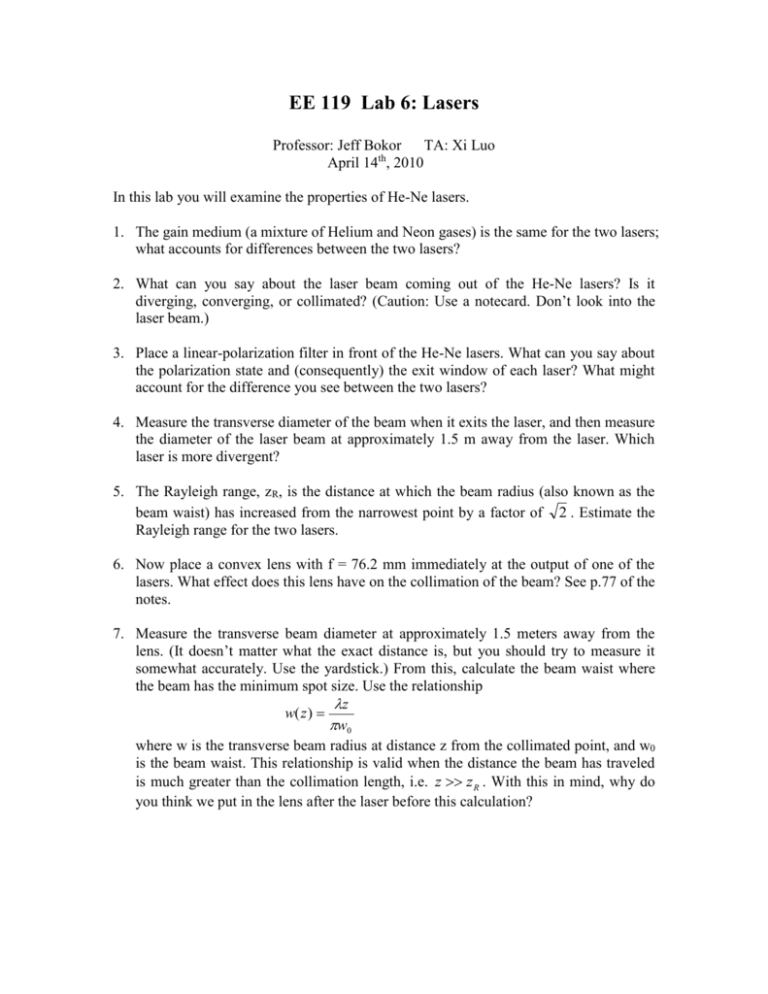UNIVERSITY OF CALIFORNIA AT BERKELEY
advertisement

EE 119 Lab 6: Lasers Professor: Jeff Bokor TA: Xi Luo th April 14 , 2010 In this lab you will examine the properties of He-Ne lasers. 1. The gain medium (a mixture of Helium and Neon gases) is the same for the two lasers; what accounts for differences between the two lasers? 2. What can you say about the laser beam coming out of the He-Ne lasers? Is it diverging, converging, or collimated? (Caution: Use a notecard. Don’t look into the laser beam.) 3. Place a linear-polarization filter in front of the He-Ne lasers. What can you say about the polarization state and (consequently) the exit window of each laser? What might account for the difference you see between the two lasers? 4. Measure the transverse diameter of the beam when it exits the laser, and then measure the diameter of the laser beam at approximately 1.5 m away from the laser. Which laser is more divergent? 5. The Rayleigh range, zR, is the distance at which the beam radius (also known as the beam waist) has increased from the narrowest point by a factor of 2 . Estimate the Rayleigh range for the two lasers. 6. Now place a convex lens with f = 76.2 mm immediately at the output of one of the lasers. What effect does this lens have on the collimation of the beam? See p.77 of the notes. 7. Measure the transverse beam diameter at approximately 1.5 meters away from the lens. (It doesn’t matter what the exact distance is, but you should try to measure it somewhat accurately. Use the yardstick.) From this, calculate the beam waist where the beam has the minimum spot size. Use the relationship z w( z ) w0 where w is the transverse beam radius at distance z from the collimated point, and w0 is the beam waist. This relationship is valid when the distance the beam has traveled is much greater than the collimation length, i.e. z z R . With this in mind, why do you think we put in the lens after the laser before this calculation?





